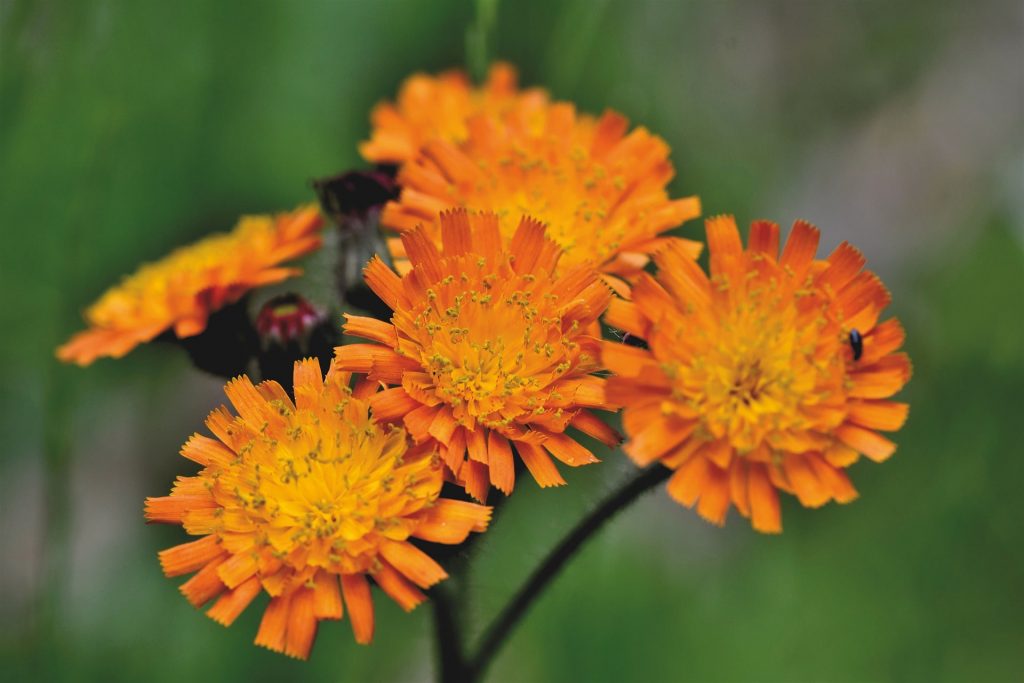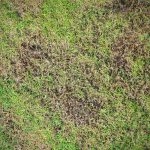Want to learn about Orange Hawkweed, the conditions it likes, and how to get rid of it?
In this guide, we’ve explained everything you need to know about Orange Hawkweed in the UK.
What is orange hawkweed?

Pilosella aurantiaca, also known as Orange Hawkweed, Fox-and-cubs, or Devil’s Paintbrush, and formerly known as Hieracium aurantiacum, is a type of lawn weed found all over the world, including the UK.
It produces small, bright orange flowers, with a yellow centre. The flowers grow from a rosette of long, hairy leaves, that look like a regular broad-leaf garden weed.
Orange Hawkweed is native to central Europe, which was introduced to Britain more than three centuries ago. It is not considered a significant problem in the UK, but is classified as an invasive species in some countries, such as Australia.
The majority of people consider Orange Hawkweed to be a pest, and seek to remove it. However, some people like the look of its burnt orange flowers, and choose to leave it growing in their lawn or garden. You can even buy Fox-and-cubs seeds, if you want to plant it.
Characteristics of Orange Hawkweed
Orange Hawkweed is a quite hardy perennial flower, but it will not take over your entire garden. You should be safe to leave it if you only have a few flowers showing, as long as you don’t mind how they look.
Fox-and-cubs prefers warm, dry soil, especially in direct sunlight. In these conditions, this plant can self-seed and spread itself very quickly, which is why it’s considered invasive in many warm climates, outside of Europe. However, this wildflower plant doesn’t normally get enough sun in the UK to spread quite so quickly.
Orange Hawkweed begins flowering in the summer, and will continue to flower right throughout autumn, provided it’s not too wet.
The leaves on Fox-and-cubs can grow up to 18cm long, and the stem can grow up to 70cm tall. Both will excrete a milky substance if pressure is applied.
Controlling Orange Hawkweed

If you want to control Orange Hawkweed, and prevent it from spreading throughout your garden, you can either use natural methods or chemical weed killers.
Natural methods
To control Fox-and-cubs naturally, the first thing to try is digging each plant out of the ground. Ideally, you want to do this before the plant begins seeding in the early summer.
When digging up Orange Hawkweed, be aware that it can have quite long stolons, so be careful to ensure you get all of its roots with your shovel or hand trowel.
You can also use a heat gun designed to kill weeds, to get rid of Fox-and-cubs. Using one of these devices, you can burn the plant at its base, killing it after a few days. Once the weed is completely dead, you can remove it from your lawn.

However, this is another method that works best before the plant flowers – because the stems are quite thin, they can be difficult to burn.
Chemical methods
You can also get rid of Orange Hawkweed clusters using a targeted application of herbicides.
Look for a product that is advertised to work on broadleaf weeds, as well as flowers such as dandelions. Then, following the manufacturer’s instructions, apply some of the weedkiller to the base of the plant, being careful to avoid getting it on the grass, or any other plants you want to survive. Then, once the flowers die and the plant turns black, you can easily remove the Fox-and-cubs from your garden.
To learn more about how to kill weeds in your garden, including some natural methods, read our guide on the subject.

I’m Josh, and I’m the head writer at Lawn Care Pro.
I love everything lawns, but I’m a bit of a lawn mower nerd. I spend a lot of my free time tinkering with mowers, and planning my mowing schedule for the next few weeks.
I’m also into cars, which comes in very helpful when servicing a mower engine!



